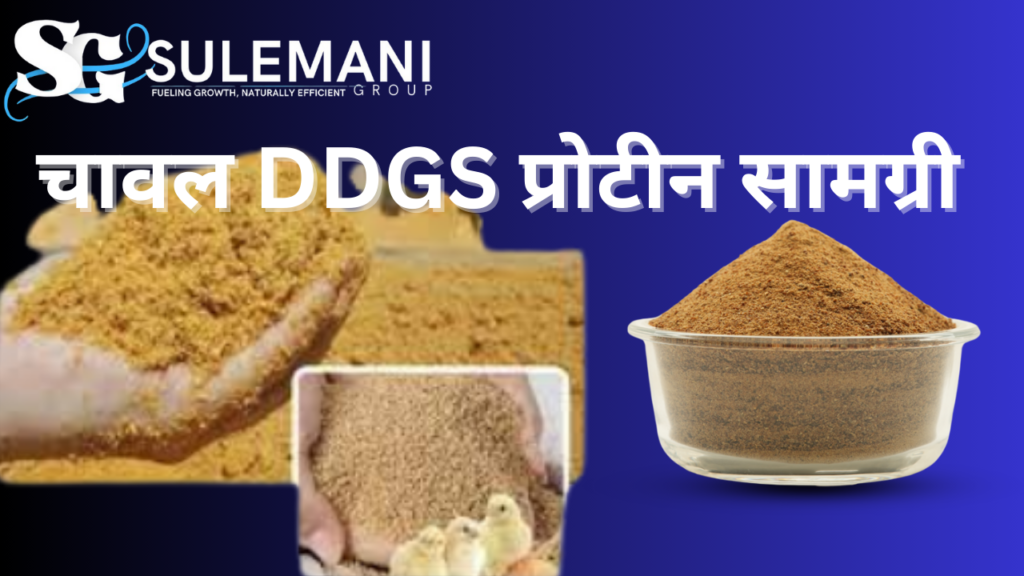चावल DDGS प्रोटीन सामग्री

Rice DDGS Protein Content: A Valuable Feed Ingredient for Livestock
Rice DDGS (Distillers Dried Grains with Solubles) is a byproduct of rice ethanol production, valued for its rich nutritional profile. It provides a cost-effective and eco-friendly option for animal feed, supporting the health and productivity of various livestock. With its high protein content, fiber, and essential nutrients, rice DDGS is widely used in the diets of dairy cattle, poultry, and aquaculture.
What is Rice DDGS?
Rice DDGS is created as a co-product in the fermentation and distillation processes used to produce rice wine or sake. This nutrient-rich byproduct is commonly used in animal feed, offering significant health benefits due to its protein, fiber, and other essential nutrients.
Rice DDGS Protein Content
Rice DDGS Protein Content
The protein content in rice DDGS plays a critical role in supporting livestock health, promoting muscle development, and overall well-being.
Key Benefits of Rice DDGS
- High Protein Content: With over 30% protein, rice DDGS supports muscle growth and overall health in livestock.
- Fiber-Rich: The fiber content aids in digestion, promoting better gut health in animals.
- Energy Source: Rice DDGS provides essential energy, boosting daily activity and productivity, particularly in dairy animals.
- Essential Minerals: Important minerals like phosphorus and potassium help maintain a balanced diet for animals.
Advantages of Rice DDGS in Animal Nutrition
- Boosts Growth & Productivity: The protein and energy levels in rice DDGS contribute to enhanced growth and improved productivity.
- Supports Digestion: It improves gut microbiome health, aiding digestion and reducing the risk of digestive issues.
- Cost-Effective: Rice DDGS is an affordable alternative to other feed ingredients like soybean and corn, lowering overall feed costs.
- Eco-Friendly: As a byproduct of ethanol production, rice DDGS supports sustainable farming practices, reducing waste and promoting greener livestock agriculture.
Rice DDGS for Different Animals
- Dairy Cattle: Improves milk production and overall health, especially due to its fiber content.
- Poultry: Supports growth and egg production, providing essential nutrients.
- Aquaculture: Enhances growth rates and feed conversion in aquatic animals like fish and shrimp.
- Pet Food: Suitable for pets, offering a good source of protein and fiber for dogs and cats.
Benefits of Protein Content in Rice DDGS for Animal Feed
- Protein Abundance: Rice DDGS contains 28% to 32% protein, providing necessary amino acids for animal growth.
- Energy-Rich Carbohydrates: The fiber and simple sugars in rice DDGS offer a controlled release of energy, supporting digestive health.
- Vitamins & Minerals: Packed with essential vitamins like B-vitamins, and minerals such as phosphorus and potassium, it supports animal health.
- Digestibility: Its superior digestibility ensures that animals effectively absorb and utilize the nutrients, optimizing their feed’s benefits.
Conclusion
Rice DDGS is a vital component in animal nutrition, offering an excellent protein source, along with fiber and essential nutrients. It is a cost-effective and eco-friendly feed option that enhances livestock health and productivity. Incorporating rice DDGS into animal diets can significantly improve their growth, health, and overall performance.
Rice DDGS Protein Content (FAQs)
Q- What are the uses of rice DDGS for animals?
A- Rice DDGS provides essential nutrients such as amino acids, vitamins, and minerals, which promote overall animal health and well-being.
Q- What is the shelf life of rice DDGS?
A- Rice DDGS has a shelf life of approximately 6 months. It should be stored in a dry place to maintain its quality.
Q- What is the protein content of rice DDGS?
A- Rice DDGS typically contains between 25% and 35% protein, making it an excellent protein source for animals.
Q- What are the key benefits of rice DDGS?
A- Rice DDGS is rich in protein and aids in digestion, contributing to the overall health and well-being of animals.
